I boarded my flight after a heartfelt goodbye at the Rapid City airport in South Dakota. My new friends, John and RuthAnn, dropped me off after spending several weeks together digging, eating, singing, praying, and laughing. I sat on the plane and took time to write down the highlights from my trip—details about the people I met, fears I had had stepping into my first dig season, and lessons I learned during my time at Hanson Ranch Research Station. During my first field paleontology experience, I soaked up digging techniques, GPS methods, stories, and wisdom from new friends, and reminders from the Lord that this world is His, and I am limited.
What Brought Me to Hanson Ranch?
First and foremost, I went to Hanson Ranch to begin my paleontology PhD project focusing on the taphonomy of a Cretaceous bonebed. And how nerve-wracking it was to begin! As a second-year paleontology student, I have had very limited time in the field due to the pandemic. In March of 2020, our school canceled field trips and moved classes online. My original research plans fell through and I had to start from scratch. I was stuck waiting for field work with every other field scientist, wondering when I would get the chance to gain experience and move forward with my degree and passions. When the time finally came, it was surreal and intimidating.
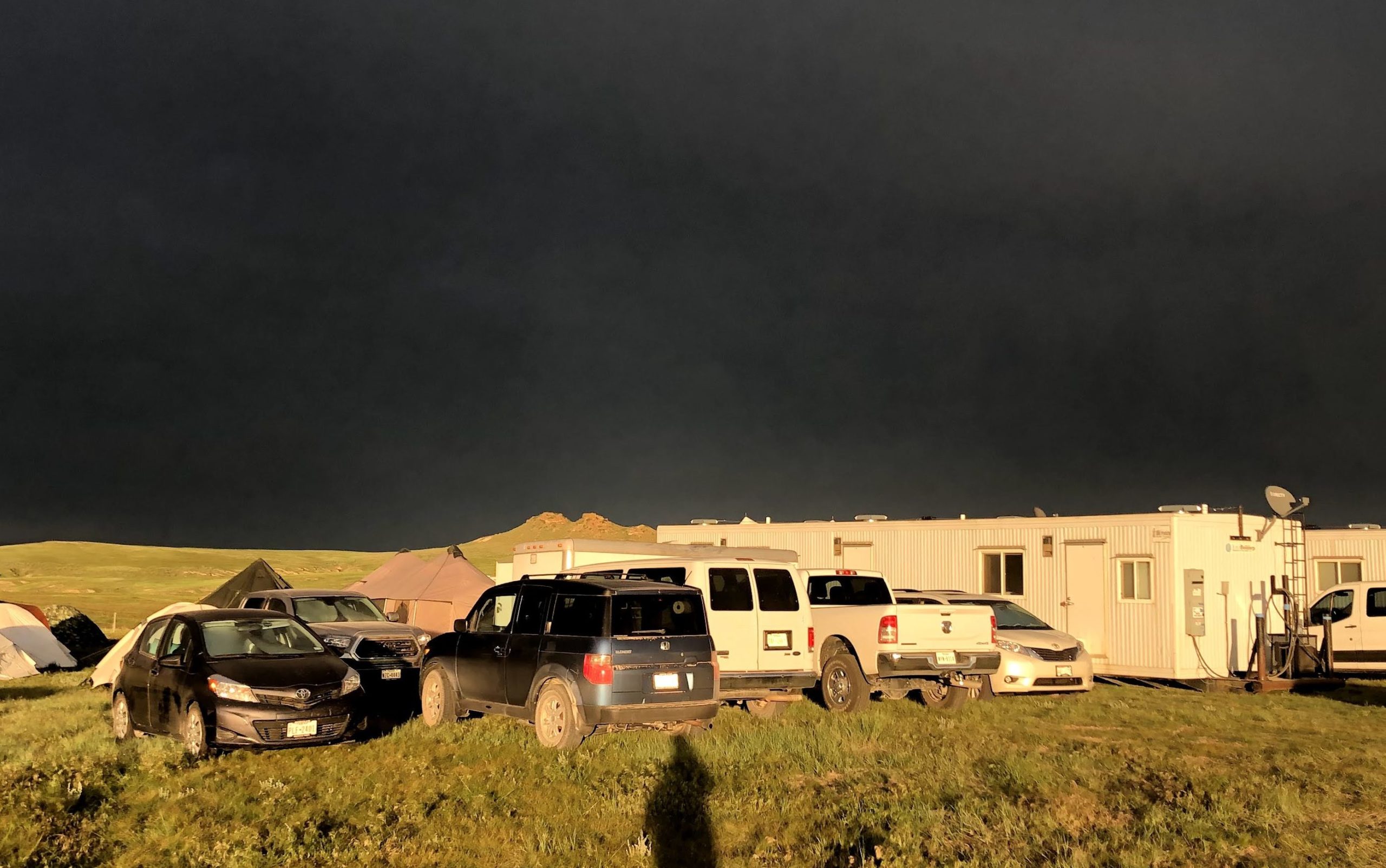
Camp Life
My advisor, Dr. Matt McLain, and one of his undergraduate students joined me during my first few days in Wyoming. We arrived at Hanson Ranch Research Station welcomed by scientists, teachers, families, and volunteers. Southwestern Adventist University runs the Dino Dig project and had set up a fantastic camp to live at for the next few weeks—trailers containing kitchens and bathrooms, wind-resistant tents to withstand Wyoming’s weather, and a fellowship area for worship and meal times. Each day, four teams took turns cooking, cleaning, and leading worship.
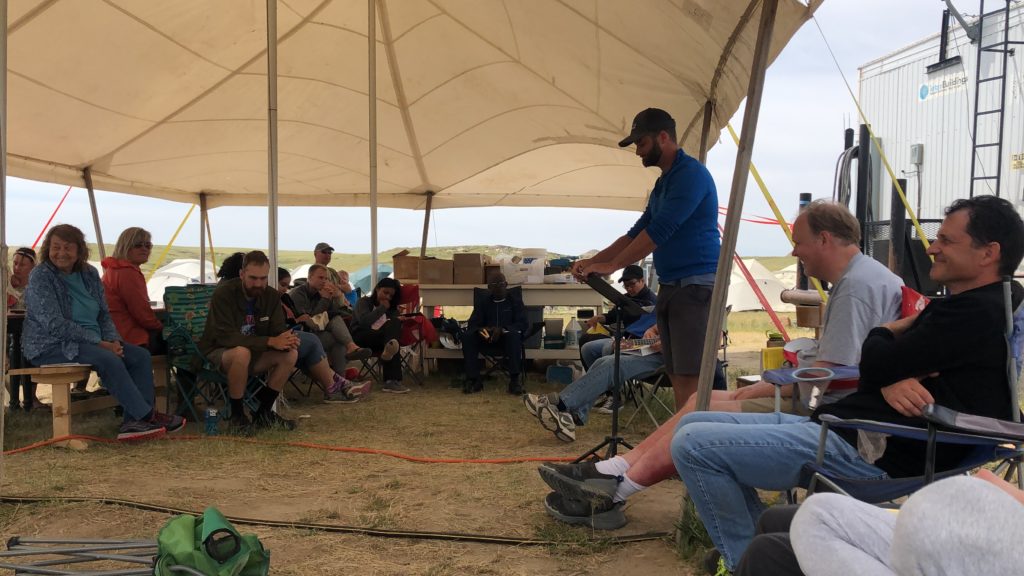
The Quarries: Digging for Dinosaurs

Several quarries exist at Hanson Ranch, each with its own characteristics. The main quarries are a mile from camp, where most volunteers start their work. The main quarries contain muddy sediment and thousands of well-preserved hadrosaur bones from a mass burial!1, 2 Outer quarries, such as Ivarrest Quarry, require some extra travel by hiking or driving an ATV. Ivarrest’s fossil layer is composed of muddy sand with iron concretions. You can expect to find handfuls of fossils at a time in the bonebed. The bones, many from turtles and triceratops, are fragmentary and many show signs of abrasion.
Setting up the quarry for a new season was an exciting feat as I looked out at the distant hoodoos a mile ahead. The adventure of getting to the site would occasionally involve an ATV, but usually we trekked into a valley, crossed a barbed wire fence with a makeshift, rock staircase, and hiked over a hill towards Ivarrest Quarry. Thankfully, a few team members from the base brought us tarps, a canopy for shade, kneeling pads, shovels, buckets, and ropes via the ATV.
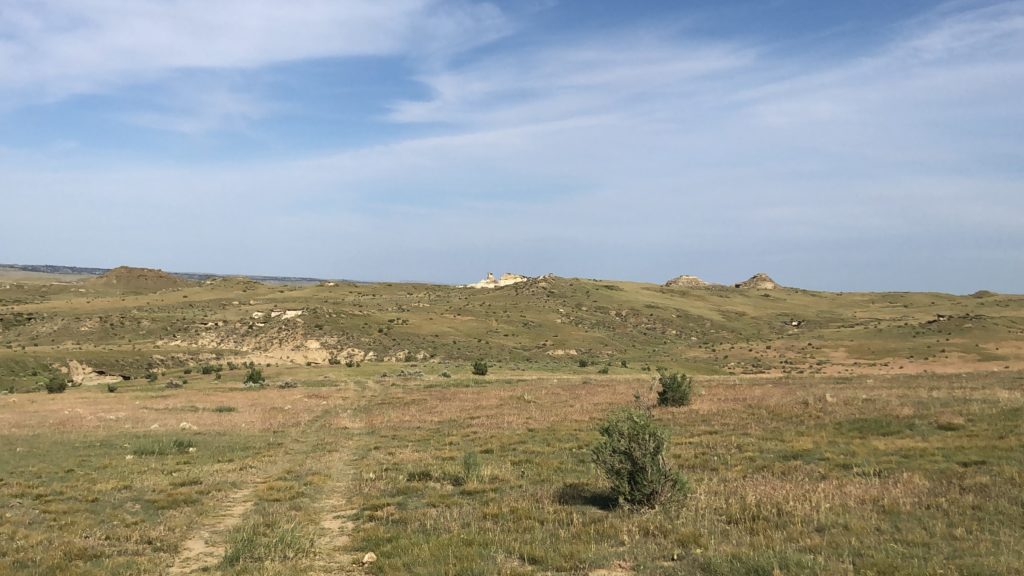
Learning the Ropes
Finding Fossils
My instructors started the first day by showing me how to identify bone fragments and turtle scutes that had been eroded since the last dig season. At first I was intimidated, but felt a wave of encouragement when Dr. Snyder sat me down and said, “Noel, what is this?” I responded, “Uh…a rock?” to which he graciously replied, “Nope, that’s a turtle scute. We’ll keep that.” He repeated this lesson several times over, pointing to a piece of “something” on the ground, challenging me to identify it, and training my eye to recognize obscure fossils. At times, it is surprisingly difficult to tell the difference between a rock and a bone!
Dr. Snyder and Dr. McLain showed me how to dig, looking for tiny fragments of fossil and listening for the “clink!” of bone against the scrapers. I didn’t realize how my ears were going to be a helpful tool for this job!
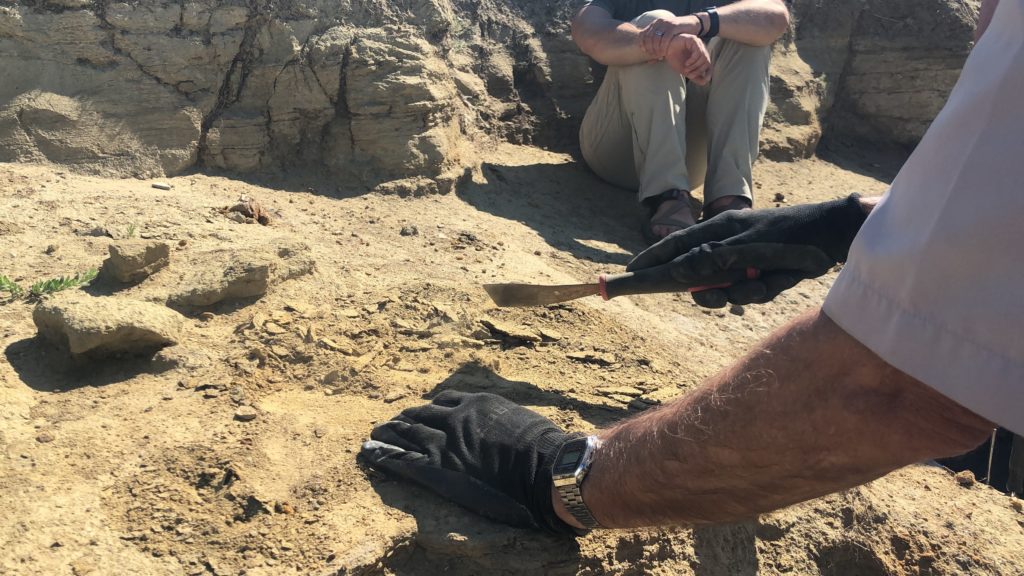
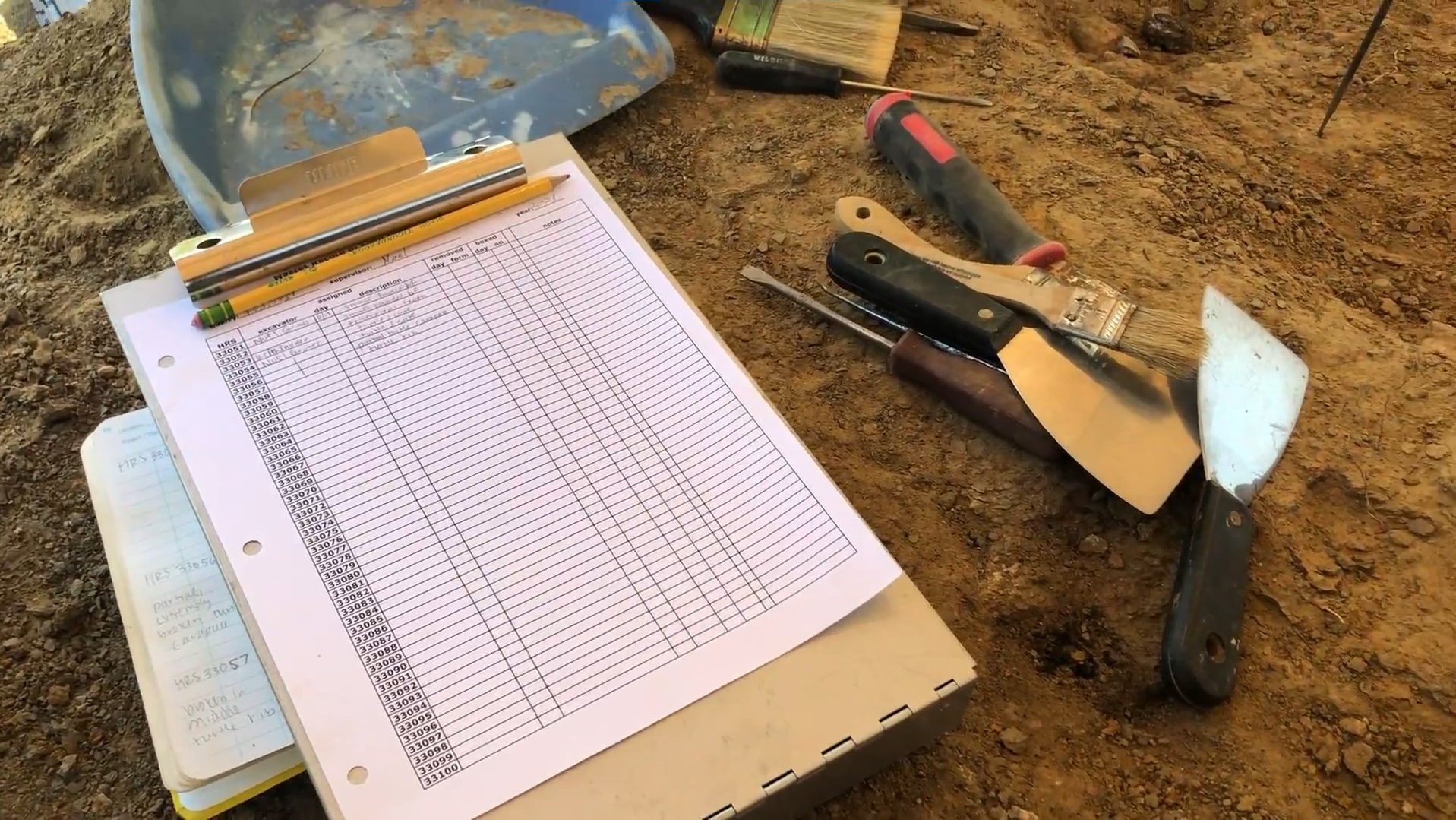
And so we began to dig…and dig and dig and dig. The hard work, sweat, and sore knees were worth it as we uncovered fossils. One of the first days, our friend Emily found a triceratops scapula cemented to a turtle skull! We found a ton of turtle material along with a few T. rex and triceratops teeth, crocodilian scutes, and theropod bones. Mostly, we found hundreds of small, abraded bone fragments.
Recording the Finds
We left each discovery in its original position until we obtained GPS coordinates with extreme precision (within 3 centimeters). Additionally, each excavator uses a field notebook to record measurements and sketches of every find. Every fragment, bone, tooth, sketch, and coordinate will all be useful as I construct a taphonomic model for the bonebed.
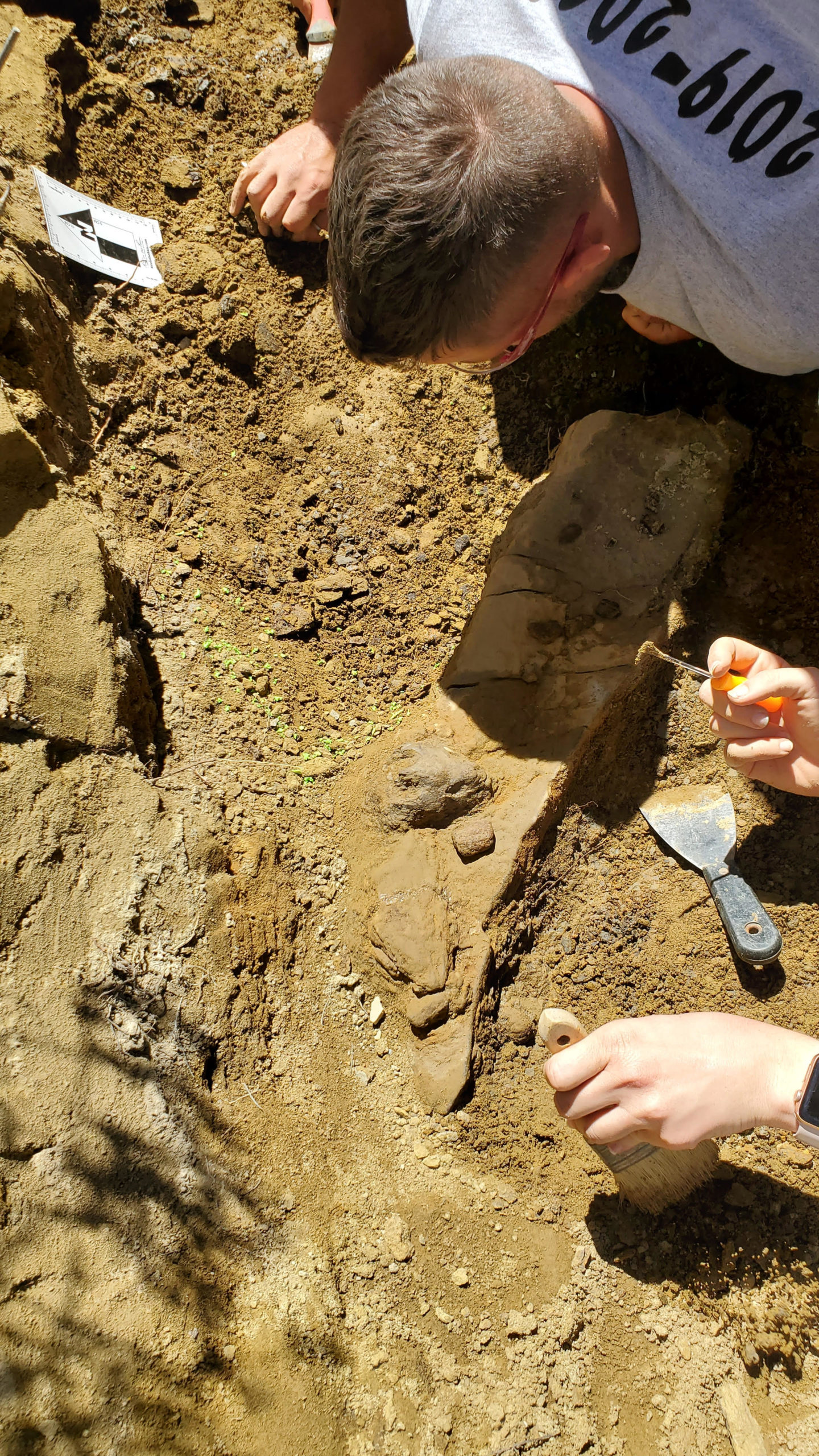
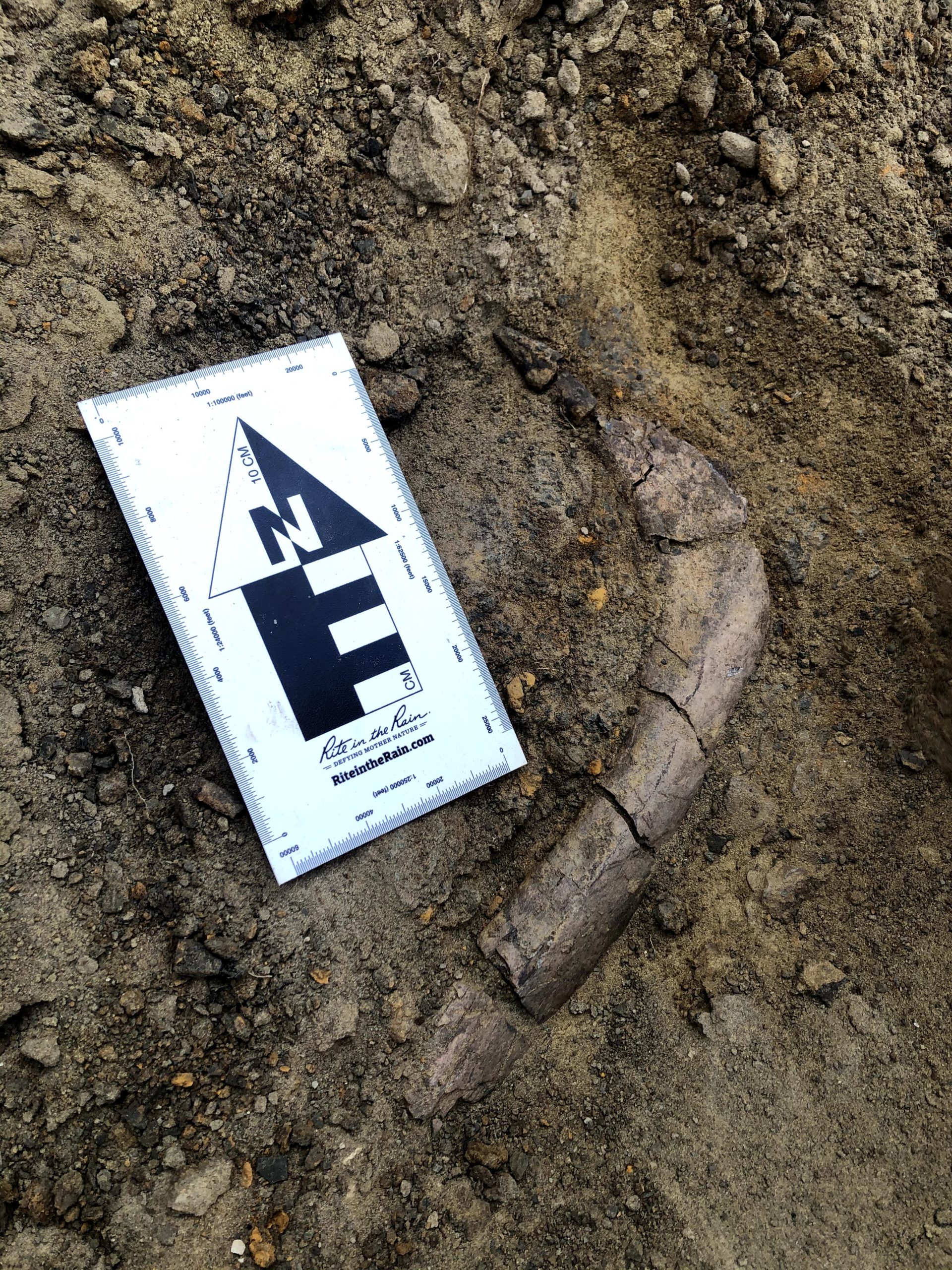
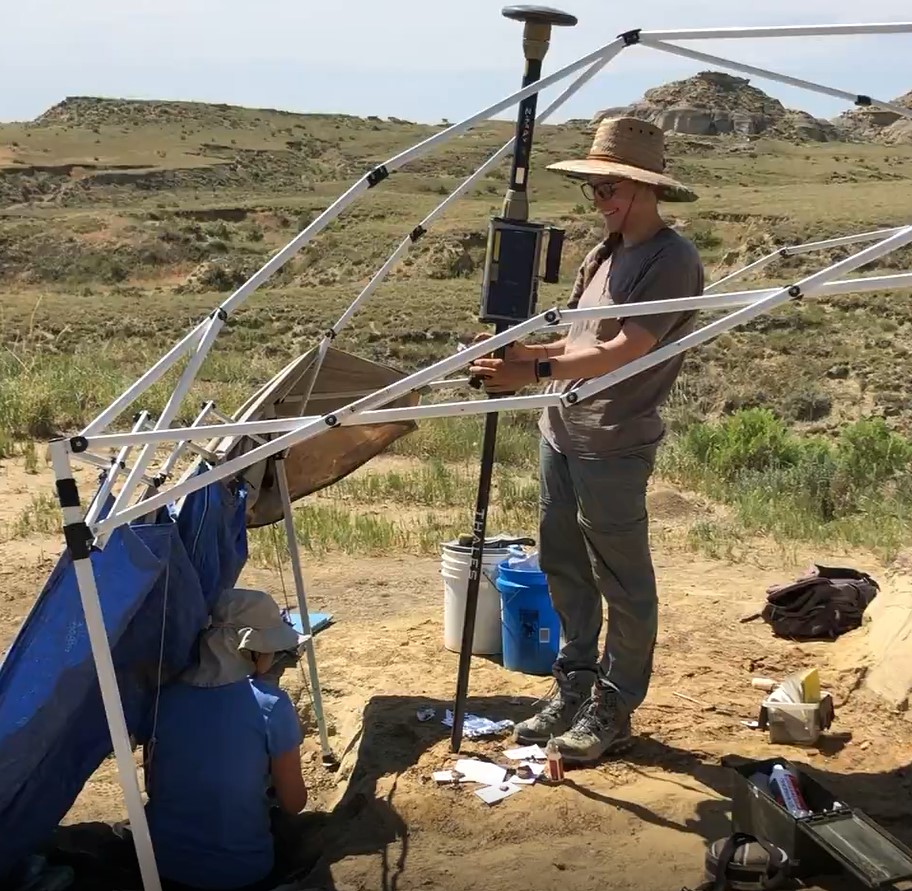
Digging Deeper
The external glory of field work is often seen in digging up dinosaur bones—the results, when unearthed, are easy to grasp and admire, but they do not come without challenges. Three weeks is not a very long time—but it sure feels like it will be when temperatures reach 100 degrees, the wind blasts sand in your face, and you’re hunched over digging for 8 hours a day. But it is not without its rewards, both in scientific discovery and personal growth.
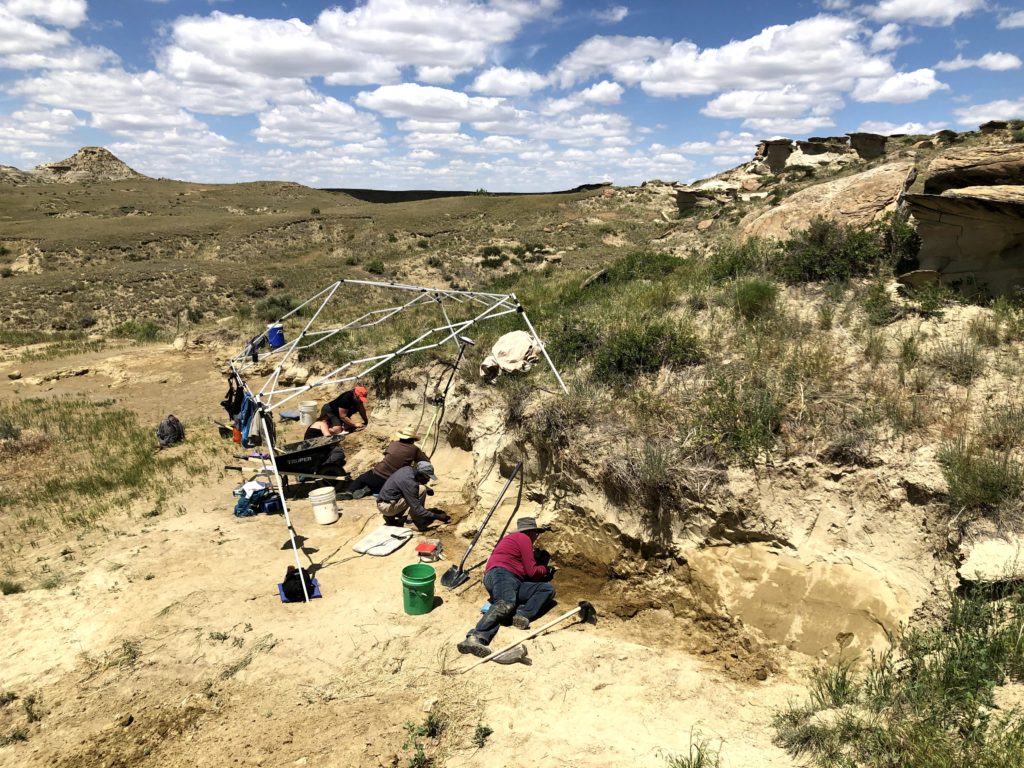
The People
Adjusting to a new environment and a new type of work with strangers was a challenge at first. I wasn’t sure what it would be like digging in the quarry for so long. Honestly, I was overwhelmed when I thought about all the days ahead. God is outside of time, but I am not; I cannot think too far ahead otherwise my brain feels like it’ll explode. No wonder Jesus told his disciples in Matthew 6 to worry only for today! I had to focus on each day, each hour, and each task.
Building new friendships was one of my favorite parts of the dig. I heard the testimonies of my new friends—the faith that had been tested for decades yet proven strong, the fellow sinners transformed by the grace of God, and the sweet stories of couples meeting and families growing. The Dino Excavation Project brings people together from a wide variety of backgrounds. You don’t have to be a trained paleontologist to participate! People from all over the world (e.g. Nigeria, Puerto Rico, and Rowanda!) can visit and find dinosaur bones!
The Weather
A storm began rolling in during my second night on the ranch (definitely a bigger storm than what this Californian is used to). Raindrops sprinkled down for a while at the start, and an amazing double rainbow peaked through the clouds. After a few minutes of peace, however, hail poured down, rain blew sideways, and we huddled in the canopy wondering when it would pass. The air turned warm and the lightning flashed directly above us.
I feared what was ahead and prayed. Eventually, the rain let up enough to walk to my tent mostly dry. After grabbing my Bible from my backpack, I read in Mark 4 about Jesus sleeping through the windstorm. His disciples woke him up in a panic yelling, “Don’t you care that we are about to die?” Jesus, our gracious Creator (Colossians 1:16), rebuked the wind and all was calm. He is in control of His creation.
God’s Goodness
The Cretaceous bones we were digging up are likely from the Flood. Though an amazing fact, it was easy for me to forget the significance of the site as I slipped into the routine of digging. When I considered what was under my feet, though, I remembered that each bone we find at Hanson Ranch (over 30,000 so far!) is a reminder of God’s holy judgment on sin through a catastrophe, His promise to never flood the earth again, and the salvation he offers believers from His holy wrath. He is a good God. Though He brings storms, He can also rebuke them with a word. I am so thankful we have a trustworthy, unwavering Creator.
My time at Hanson Ranch was full of discovery, questions, and friends. Who knows what we will find next year?
Dig with Us!
SWAU welcomes anyone to visit and volunteer at the dig! From families to church groups, retired volunteers to children, anyone can gain field experience at Hanson Ranch. Look out for more information from Southwestern Adventist University as next June approaches.
Extra Fun!
Wildlife Around the Ranch
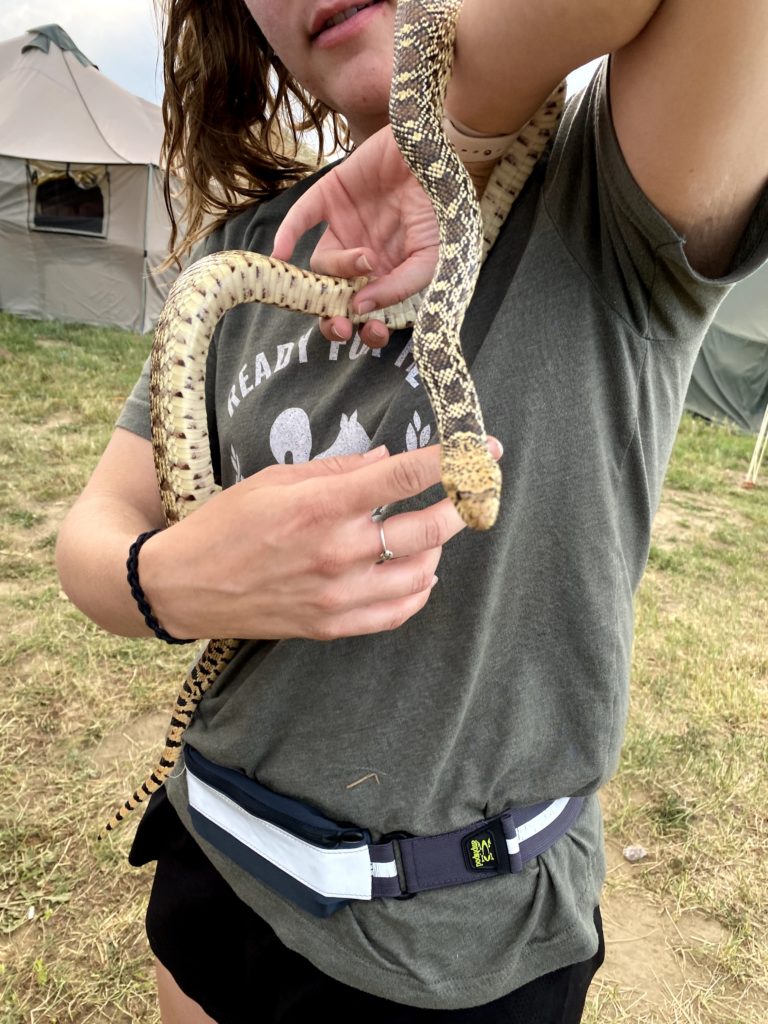
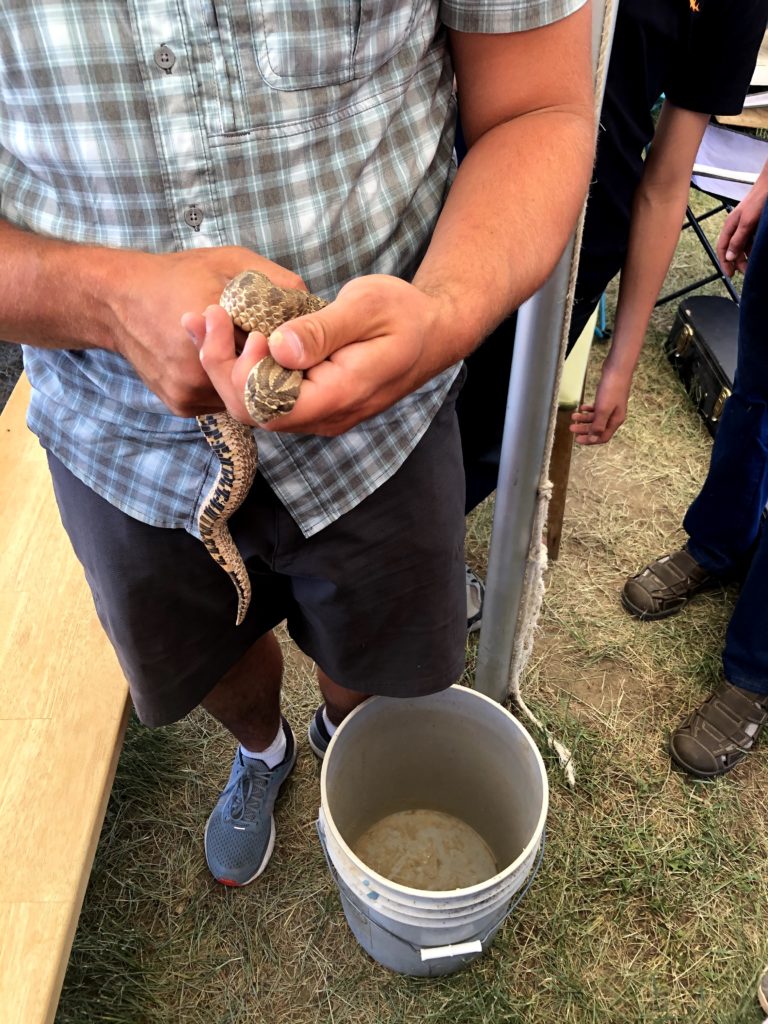
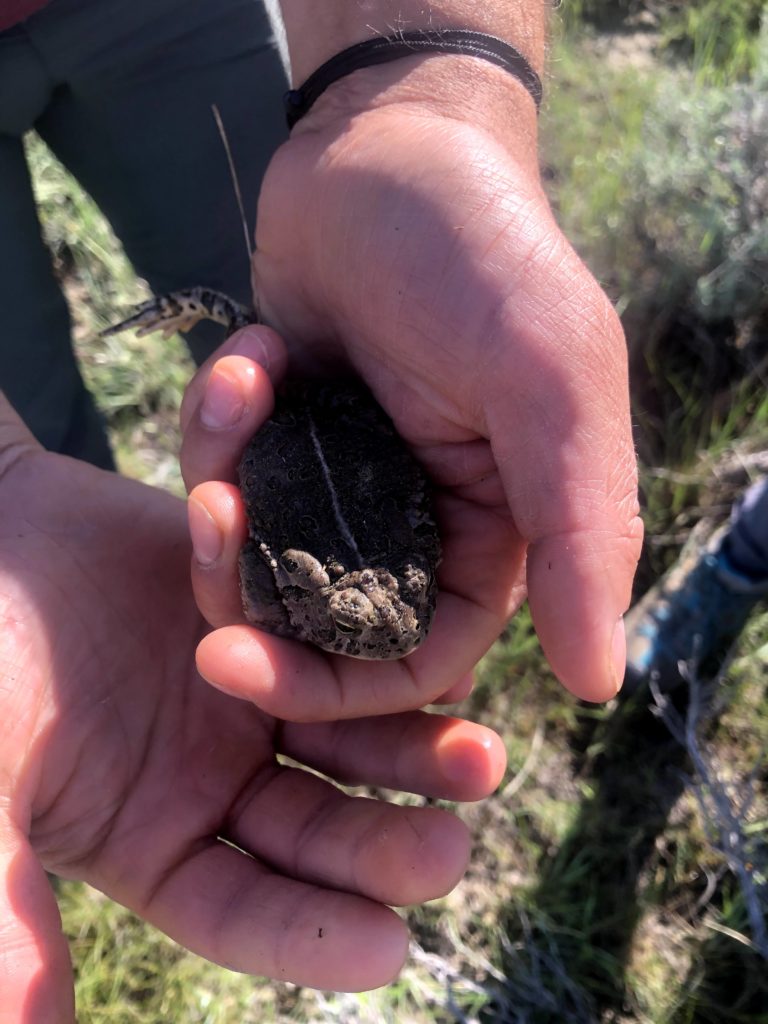
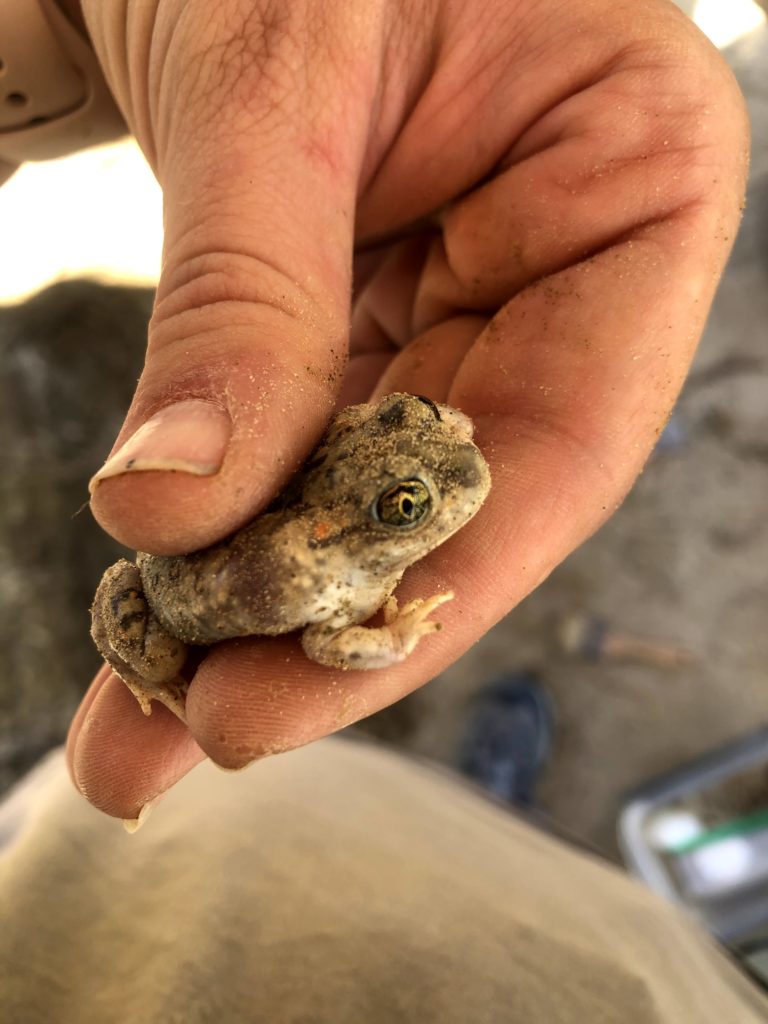
Taking Out the Scapula
Footnote
- Weeks, SR. Depositional model of a late Cretaceous dinosaur fossil concentration, Lance Formation. M.S. thesis, Loma Linda University, California. 2016:123. ↩︎
- Snyder, K., McLain, M., Wood, J., & Chadwick, A. (2020). Over 13,000 elements from a single bonebed help elucidate disarticulation and transport of an Edmontosaurus thanatocoenosis. PloS one, 15(5), e0233182. ↩︎

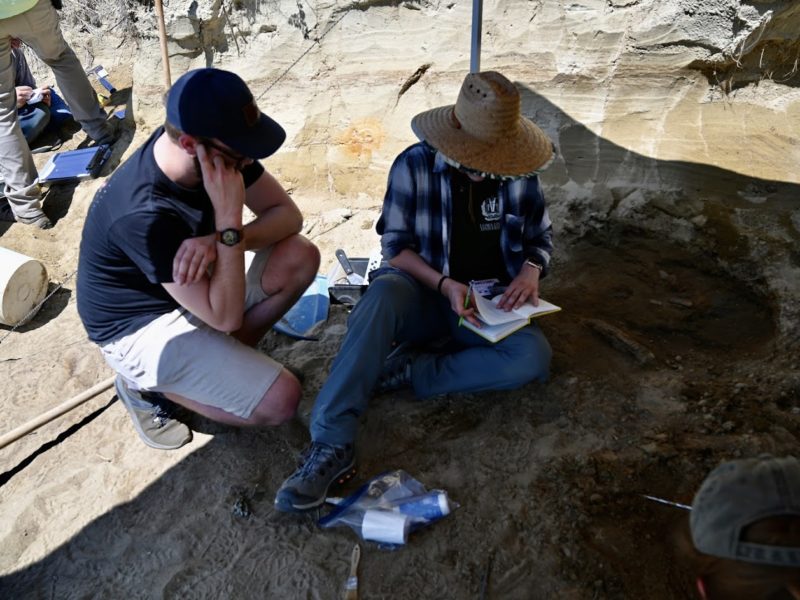




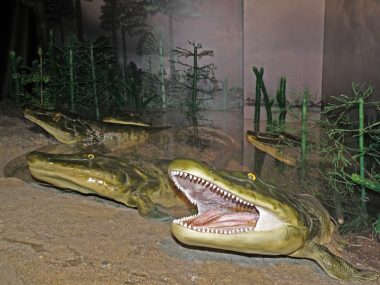
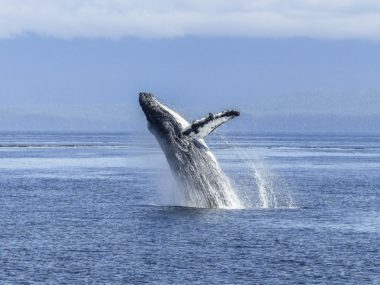




Dinosaurs are a famous story and thier great size and uniqueness makes seeking them out a adventure. As a creationist i conclude there was no dinosaurs/. This is a misidentification of spectrums of members in kinds. these creatures were buried by the flood year. never later deposits.
So what is being dug up is types/members of unrelated kinds.
For example theropod dinos are just flightless ground birds. However big and toothy. They were not reptiles not certain kinds nor a genra from creation week.
Its okay to dig them out but it must be creationism’s agenda to destroy the idea of dinosaurs ever existing. T rex was a giant bird and the sauropods were something that today we might have members of. I don’t know what.
The best thing from a theropod dig is a t rex with a wishbone and feathers and a accurate interpretation.